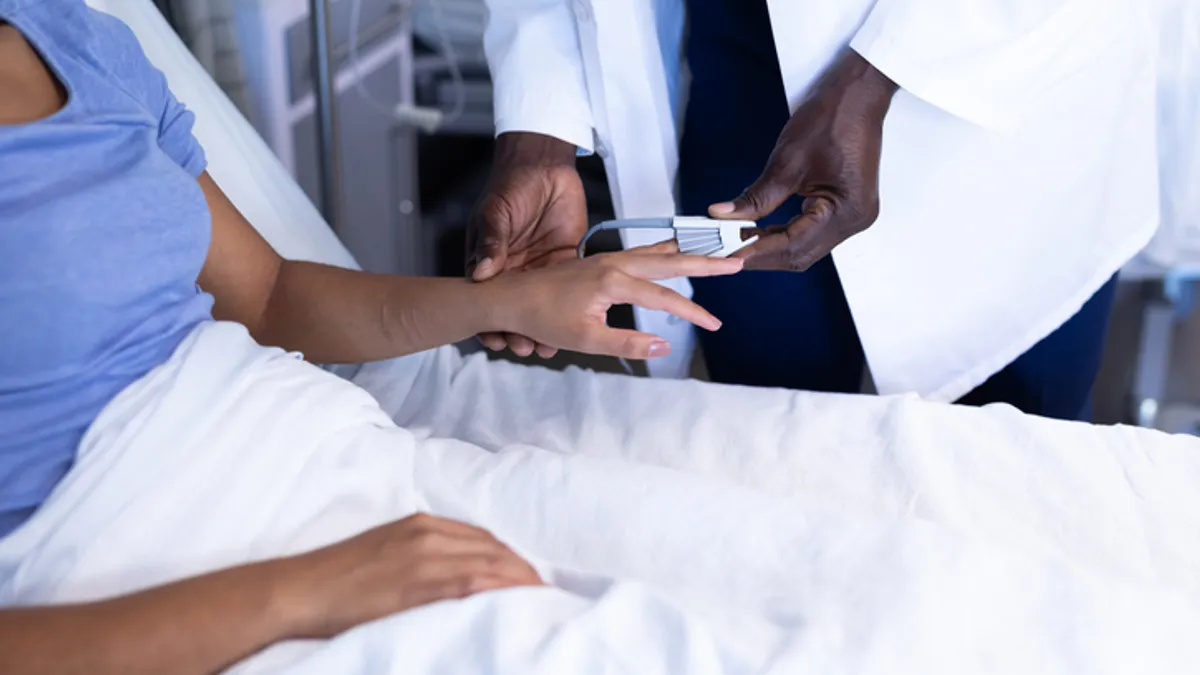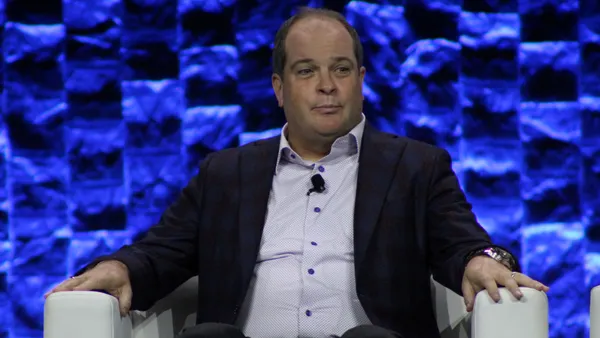Dive Brief:
- Optical sensor solution in fingertip monitors gives medical-grade accuracy of oxygen level measurement across skin tones and while in motion.
- A patented SpO2 sensor chipset, integrated processing and reference design capability has uses in other wearable devices, according to BioIntelliSense.
- The inability of many fingertip monitors to accurately read blood oxygen levels has caused people with darker skin to wait hours for supplemental oxygen and in some cases has caused deaths.
Dive Insight:
BioIntelliSense unveiled a patented pulse oximetry sensor chipset and integrated processing technology that accurately measures blood oxygen levels across the full range of light to very dark skin pigmentations, as well as during movement and activity.
Thee announcement comes as the Food and Drug Administration, which approved the device, holds hearings to discuss the effective racial disparity in care delivery caused by pulse oximeters,
Pulse oximeters are a vital part of patient monitoring particularly for COVID-19 patients, allowing instantaneous readings of blood oxygen. Studies have shown that standard pulse oximeters overestimate the amount of oxygen in the blood of patients with darker skin.
Because the oximeters use light to measure blood oxygen saturation, darker skin gives readings that distort the actual amount of dissolved oxygen in a patient’s blood. Some firms, including Irvine, California-based Masimo, have also developed data-analysis tools that correct for darker skin.
Now, BioIntelliSense has joined the group of firms that can produce a pulse oximeter that accurately accounts for disparities in skin color, and can also measure blood oxygen of patients in motion, a key to delivering the right amount of supplemental oxygen to patients being moved to a hospital from the scene of an accident.
“Addressing these foundational skin pigmentation and motion challenges in the measurement of blood oxygen levels is transformative for the pulse oximetry category and allows for the democratization of this advanced technology across consumer and medical grade devices,” CEO James Mault said in a statement. The new chips “may contribute to improving healthcare equity,” he added.
BioIntelliSense said its patented sensor and processing solution received FDA 510(k) clearance in 2021. Unlike traditional red and infrared LED architectures, the company’s technology additionally employs a white light emitter combined with a spectral sensor.
BioIntelliSense said its oximetry signal processing has an extended dynamic range and compensates for higher absorption levels of light in darker skin tones by increasing tissue illumination.
“In multiple clinical hypoxia studies, with and without motion protocols, the BioIntelliSense SpO2 solution has demonstrated consistent accuracy for darkest skin tones — on par with light skin tones — including at low oxygen saturation ranges,” the company said in a statement.
BioIntelliSense noted in the statement that it had recently signed an agreement for its BioButton multi-parameter wearable to be distributed by Medtronic, the largest medtech firm by revenue. Licensing agreements have been signed with LifeSignals and Biostrap to integrate BioIntelliSense’s blood oxygen sensor chipset and processing solution into their medical grade wearable device solutions, the company said.
“By leveraging our extensive reach and commercial channels, the Medtronic Patient Monitoring business is excited to work together with our partners at BioIntelliSense to expand access to meaningful technologies to patients anytime, anywhere,” Frank Chan, Ph.D., president of Medtronic’s Patient Monitoring business, said in the statement from BioIntelliSense.
Correction: Corrects to specify that BioIntelliSense has not yet brought a sensor to market using its new technology, nor has Medtronic agreed to distribute an oximeter using the BioIntelliSense technology.












